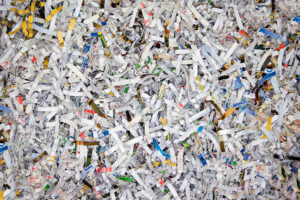Pharmaceutical waste is a type of medical waste generated by healthcare facilities, such as hospitals, clinics, and pharmacies. These wastes can be categorized as either hazardous or non-hazardous, depending on the type and quantity of drugs being discarded. Proper handling and disposal of pharmaceutical waste is essential to prevent harm to people and the environment. In this blog, we will discuss the differences between hazardous and non-hazardous pharmaceutical waste, how to handle and dispose of them properly, and the consequences of mis-handling them.
What is Hazardous Pharmaceutical Waste?
Hazardous Pharmaceutical Waste includes drugs or chemicals that are classified as hazardous waste due to their potential to cause harm to human health or the environment. Examples of hazardous pharmaceutical waste include:
- Chemotherapy drugs
- RCRA-listed hazardous waste pharmaceuticals
- P-listed waste
- U-listed waste
- Ignitable, corrosive, or reactive chemicals
Proper disposal of hazardous pharmaceutical waste involves identifying and segregating them from other types of waste, storing them in designated containers, and sending them for specialized treatment and disposal. The U.S. Environmental Protection Agency (EPA) and individual states have specific regulations for the handling and disposal of hazardous pharmaceutical waste.
What is Non-Hazardous Pharmaceutical Waste?
Non-hazardous Pharmaceutical Waste includes drugs or chemicals that are not classified as hazardous waste. Examples of non-hazardous pharmaceutical waste include:
- Over-the-counter medications
- Expired prescription drugs
- Unused drugs returned by patients
- Non-hazardous chemicals
Proper disposal of non-hazardous pharmaceutical waste involves segregating them from hazardous waste, storing them in designated containers, and sending them for treatment and disposal according to federal, state, and local regulations.
Consequences of Mis-handling Pharmaceutical Waste
Mis-handling pharmaceutical waste can lead to significant consequences for healthcare facilities, such as fines, negative publicity, and legal action. For example, in 2018, the New York State Department of Environmental Conservation fined a hospital $46,000 for illegally disposing of pharmaceutical waste. The hospital was found to be discarding drugs in regular trash, instead of in hazardous waste containers.
Proper handling and disposal of pharmaceutical waste is essential to protect human health and the environment. OnSite Waste Technologies provides a comprehensive solution to manage pharmaceutical waste, including both hazardous and non-hazardous waste. Contact us today to learn more about how we can help your healthcare facility stay compliant with federal, state, and local regulations for pharmaceutical waste management.
Sources:
U.S. Environmental Protection Agency. (n.d.). Hazardous Waste Pharmaceuticals. https://www.epa.gov/hwgenerators/hazardous-waste-pharmaceuticals
New York State Department of Environmental Conservation. (2018, November 26). DEC Fines New Rochelle Hospital $46,000 for Illegal Disposal of Pharmaceutical Waste. https://www.dec.ny.gov/press/114962.html










